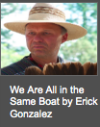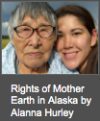The MIT/Sloan Management Review article, How to Become A Sustainable Company, addresses playing at the edges in one clear statement:
Currently, organizations that exhibit a broad- based commitment to sustainability on the basis of
their original corporate DNA are few and far between.
I was reminded of this statement listening to Canadian sustainability pioneer, David Suzuki, being interviewed by Amy Goodman on Democracy Now yesterday on RIO+20 and the so-called green economy. Here is the interview.
There is one observation in particular that addresses a fundamental paradigm shift that needs to be made in our thinking, in our consciousness in order to survive beyond this century. It rests on our ability as leaders to “reassess everything.”
“And if we don’t see the that we are utterly imbedded in the natural world and dependent on nature, not technology, not economics, not science — we are dependent on Mother Nature for our very well being and survival. If we don’t see that, then our priorities will continue to be driven by man-made constructs like national borders, economies, corporations, markets. Those are all human created things. They shouldn’t dominate the way we live. It should be the biosphere. And the leaders in that should be the indigenous people who still have that sense, that the earth is truly are mother, that it gives birth to us.”
 The indigenous people are our citizens who actually live in places of “extreme sources of energy” as referenced in David Suzuki’s comments and referred to by Erick Gonzalez, the founder and spiritual leader of Earth Peoples United, as the “last frontier.” Erick emphasizes the last frontier for extreme sources of energy are in the territories of the indigenous people. Give him a listen. It takes less than two and half minutes and is a move from the edges of sustainability to its center. Click here.
The indigenous people are our citizens who actually live in places of “extreme sources of energy” as referenced in David Suzuki’s comments and referred to by Erick Gonzalez, the founder and spiritual leader of Earth Peoples United, as the “last frontier.” Erick emphasizes the last frontier for extreme sources of energy are in the territories of the indigenous people. Give him a listen. It takes less than two and half minutes and is a move from the edges of sustainability to its center. Click here.
Next look more closely at Tar Sands as a place and what it means for the biosphere by listening to the indigenous people living there such as Clayton Thomas-Muller and Alanna Hurley and then li sten to the Canadian artists, such as Garth Lenz and Edward Burtynsky present their photography as they capture in pictures what is meant by “extreme sources of energy.” Move your attention to the center, but hurry, as “Our Scarcest Resource is Time,” as emphasized by Sustainability Pioneers David Suzuki, Lester Brown, Maurice Strong, Rajendra Pachauri, Bill Ford, Sha Zukang, and Jonathan Porritt in a video of the same title. It is part of the Ray Anderson Memorial Video Series by The Regeneration Project an initiative of the think tank, Sustainability and the research company, GlobeScan and sponsored by SC Johnson and the BMW Group.
sten to the Canadian artists, such as Garth Lenz and Edward Burtynsky present their photography as they capture in pictures what is meant by “extreme sources of energy.” Move your attention to the center, but hurry, as “Our Scarcest Resource is Time,” as emphasized by Sustainability Pioneers David Suzuki, Lester Brown, Maurice Strong, Rajendra Pachauri, Bill Ford, Sha Zukang, and Jonathan Porritt in a video of the same title. It is part of the Ray Anderson Memorial Video Series by The Regeneration Project an initiative of the think tank, Sustainability and the research company, GlobeScan and sponsored by SC Johnson and the BMW Group.
Ruth Ann Barrett, Sustainability Advocate, Portland, Oregon on June 27, 2012.
